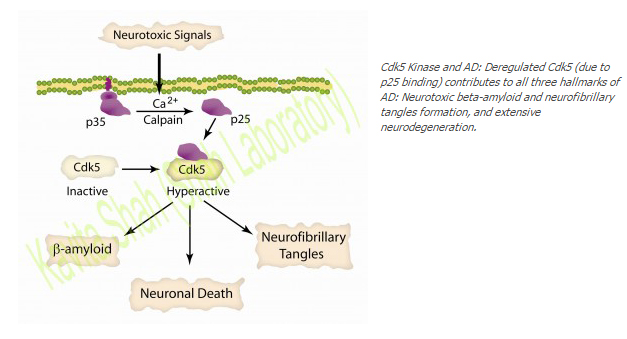Welcome to the Shah Laboratory
Drug Discovery in Cancer and Alzheimer's Disease Using Chemical Biology
Alzheimer’s Disease and Cyclin Dependent Kinase-5 (Cdk5)

Alzheimer’s Disease (AD) is a debilitating neurological disorder affecting over 5 million Americans. This number is expected to double in the next decade as population ages. Alzheimer’s disease (AD) is characterized by three major hallmarks: beta-amyloid (A beta) plaques, neurofibrillary tangles (NFTs) with profound death in specific areas of the brain. However, it is unclear whether A betaplaques and NFTs represent a cause, an effect or the end phase in the disease’s pathology. The molecular mechanism leading to extensive neurodegeneration remains to be fully elucidated. The only available drugs for AD are symptomatic agents such as cholinesterase inhibitors (rivastigmine, donepezil, galantamine), and the NMDA receptor antagonist, memantine. These drugs enhance cognitive states and delay disease progression, but do not confer neuroprotection in the long run.
Multiple studies have revealed a critical role of Cyclin Dependent Kinase-5 (Cdk5) in triggering various neurotoxic cascades in AD. Cdk5 belongs to the Cdk family of serine/threonine kinases, which is activated by binding to specific regulatory proteins, p35 or p39. These proteins are cleaved into p25 and p29 under a variety of pathological conditions critical in AD, constitutively activating Cdk5 and triggering a cascade of neurotoxic pathways. Significantly higher activity of Cdk5 is observed in AD brains compared to non-demented controls. Cdk5 deregulation contributes to all three hallmarks of AD: neurotoxic A beta and NFT formation and extensive neurodegeneration.